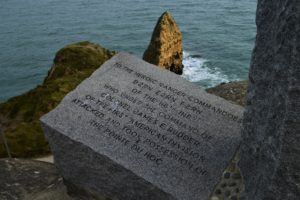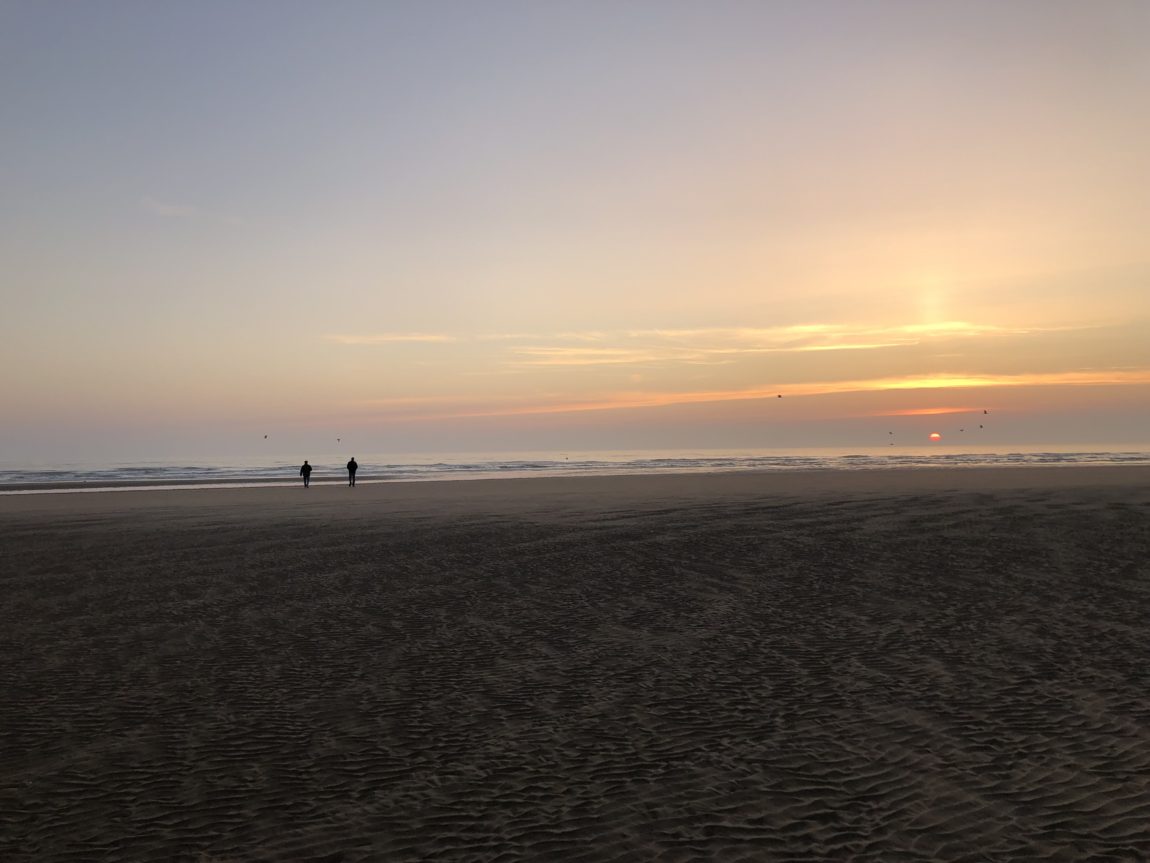The D-day beaches of Normandy have always been a place I wanted to visit and with an abundance of time in France on this trip we set aside 4 days to tour Normandy. We were accompanied by our friends Jana Barber and Roy Lamb. We expected our drive from Epernay to be a relatively easy four-hour drive to Arromanches les Bains, a small village on the Normandy coast. We didn’t plan for the traffic around Paris making for a very long day in a small car packed with four adults and luggage. We also decided to detour out of our way to the port town of Honfleur, a beautiful stop where we had a very forgettable lunch at a seaside café. The town is worth a stop even on a cold drizzly day.

Honfleur
Our home base for Normandy was Arromanches les Bains a seaside resort town that was turned into Port Winston after the invasion of June 6th, 1944. The brainchild of Winston Churchill the Allies built a port almost overnight with docks and breakwaters allowing them to bring ashore a million men, trucks, tanks and everything else without having to control a major port city, as all of the ports were heavily fortified and held by the Germans.

Arromanches and the remnants of Port Winston
Arromanches proved to be a great home base with easy access to all of Normandy from a lovely seaside town. The remnants of Port Winston remain with huge concrete caissons stretching for more than a mile along the coast. The small museum in Arromanches provides photos and models showing the amazing engineering of the temporary port.
On our first full day we splurged for a private tour guide, the $600 was money well spent for a day with Allan Bryson of First Normandy tours. Allan is a walking encyclopedia of D-Day, he has conducted more the 400 interviews with D-Day vets, consulted on movies and provided us with a detailed account of the invasion and the people who fought and died in the battle for Normandy.

The church at Angerville du Pay
Our first stop was the small church of Angerville Du Pay where we heard the story and saw the blood-stained pews where two American medics set up an infirmary to treat wounded soldiers in the early hours of D-Day. The town and church changed hands three times in fierce fighting, but the medics refused to leave, treating both American and German soldiers. When the Germans re-took the town, their commanding officer saw that German wounded were also being treated and ordered his troops to treat the church as neutral ground.
Allan took us to Utah Beach, the town of St. Mere Eglise, Pont du Hoc, Omaha Beach and finally the American Cemetery.

Pont du Hoc
At each site we learned the stories of the soldiers who fought at each location. Allan provided us with a great overview and appreciation of the American battle zone. In our travels we have visited several American military cemeteries, they are all worth a visit to get an appreciation of the men and women who have fought and died for our country.
Over the next three days we revisited most of the sites on Allan’s tour, spending time in museums and taking the time to wander the site and appreciate the courage and sacrifice of those who fought there. I do not like visiting sites in the middle of the day when they are crowded with people snapping selfies. I like pictures without people, walking in somber places like battle fields and cemeteries in the peace and quiet of early morning. Roy and I were the only car in the parking lot at Pont du Hoc one morning when we walked the site alone for an hour where American Rangers had climbed the cliffs on the Morning of D-day. Kelly and Roy joined me on another morning where we watched the sun rise on Omaha beach, a much more peaceful and beautiful sunrise than the one encountered by US soldiers 75 years ago.

Ghosts on Omaha Beach
The most surprising thing we encountered were the huge tide changes in Normandy. At low tide when the invasion began the beaches are hundreds of yards of flat sand with no cover from German machine guns. I simply cannot imagine the mindset of a teenager, soaking wet from the surf, burdened with 60 lbs. of gear and having to run 300-400 yards across the sand. At the west end of Omaha beach 90% of the first wave of troops never made it across the beach having either drowned in the surf or been taken down by German machine gun fire.
Our tour through Normandy was emotional and thought provoking. It was difficult to envision this beautiful bucolic countryside as a war zone.

The German guns at Longues Sur Mer standing watch over a field of yellow flowers
The gun emplacements now look out at fields of flowers and peaceful beaches. Children laugh and play on beaches where soldiers fought and died. When we commented how uncomfortable we felt with people laughing and playing in such sacred places Allan said he felt the same way until he was reminded one day by a war widow that the soldiers fought and died so that one day children could laugh and play on these beaches. I had to agree.

The American Cemetery
G&K







Jim McLeod
April 27, 2019 at 5:50 pmThanks for bringing your experiences to life for us!